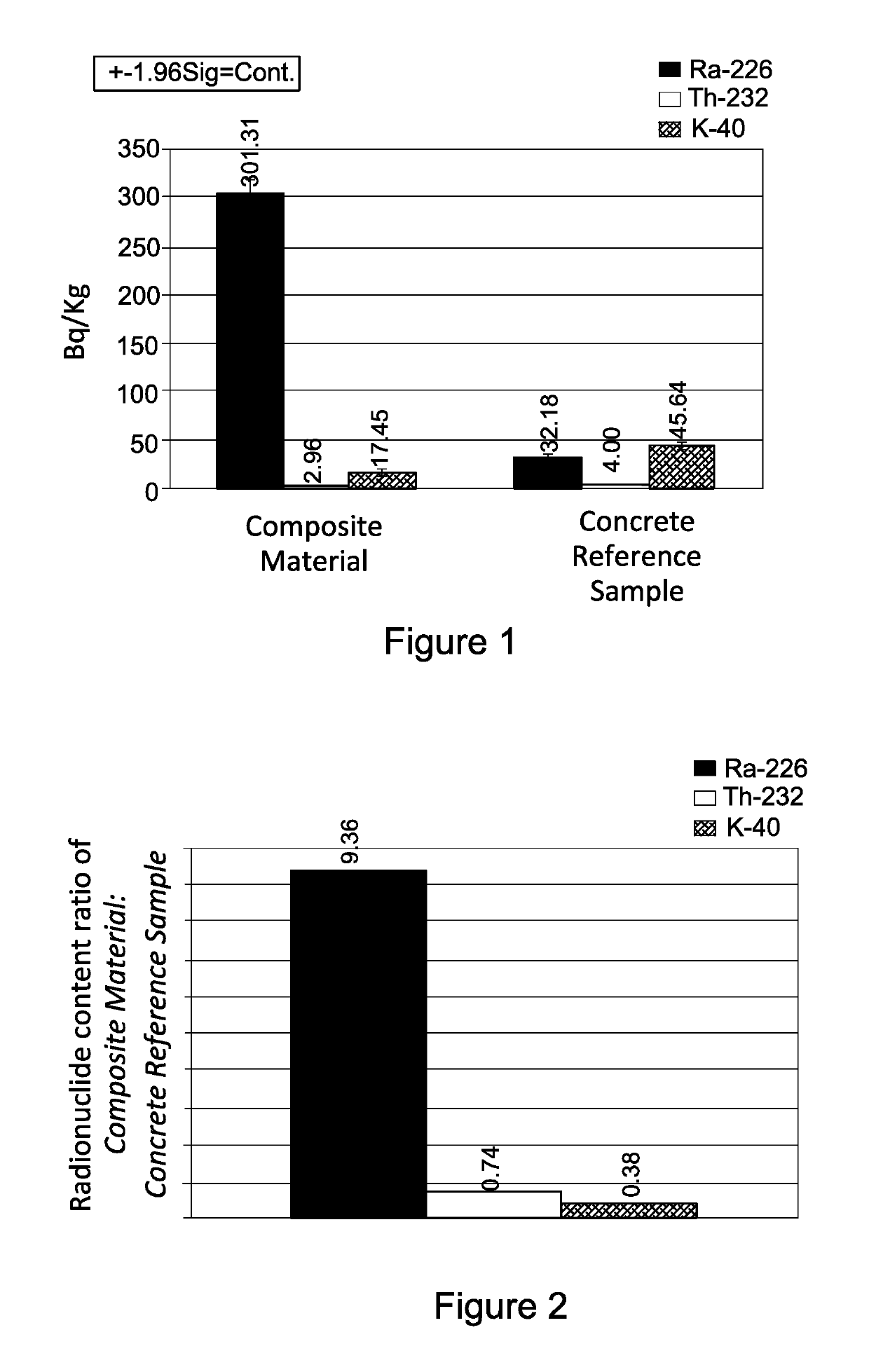Composite material comprising phosphogypsum
- Summary
- Abstract
- Description
- Claims
- Application Information
AI Technical Summary
Benefits of technology
Problems solved by technology
Method used
Image
Examples
example 1
Processing Equipment
[0121]In the following processes various devices and systems were employed, including conventional oven, mixing apparatus, compaction mold apparatus, etc.
Preparation of a Gravel:Phosphogypsum:Bitumen Composite
[0122]Phosphogypsum waste was obtained from a phosphoric acid production plant in Israel. Sieved gravel aggregates were heated in an oven at 180° C. Then, the hot sieved aggregates were mixed with the phosphogypsum waste at a weight ratio of 1:1 (aggregates:phosphogypsum) to obtain a mixture. Alternatively, the sieved gravel aggregates and the phoshpogypsum were heated together at said temperature of 180° C. Molten bitumen, at different % w / w (between 12% to 15% w / w bitumen out of the total weight of the heated (and dried) gravel:phosphogypsum mixture) was added to the hot mixture and mixed therewith thoroughly to provide a substantially homogeneous blends (Samples 1 to 4) of the three components.
[0123]For the Marshall test, each of the cooled composite mate...
example 2
amples and Characteristics
[0131]Further samples were prepared as described in Example 1, however, some containing a different phosphogypsum:aggregates composition as described in Table 2. The various samples were then analyzed for chemical impurities leaching (Table 3) and radionuclides leaking (FIG. 1) properties.
TABLE 2Samples compositionBitumen contentPhosphogypsumGravel(% w / w out of the(PG) contentcontenttotal weight of theSample No.[% w / w][% w / w]PG:gravel mixture)5505015640601577030108604013
PUM
| Property | Measurement | Unit |
|---|---|---|
| Temperature | aaaaa | aaaaa |
| Temperature | aaaaa | aaaaa |
| Fraction | aaaaa | aaaaa |
Abstract
Description
Claims
Application Information
 Login to view more
Login to view more - R&D Engineer
- R&D Manager
- IP Professional
- Industry Leading Data Capabilities
- Powerful AI technology
- Patent DNA Extraction
Browse by: Latest US Patents, China's latest patents, Technical Efficacy Thesaurus, Application Domain, Technology Topic.
© 2024 PatSnap. All rights reserved.Legal|Privacy policy|Modern Slavery Act Transparency Statement|Sitemap

